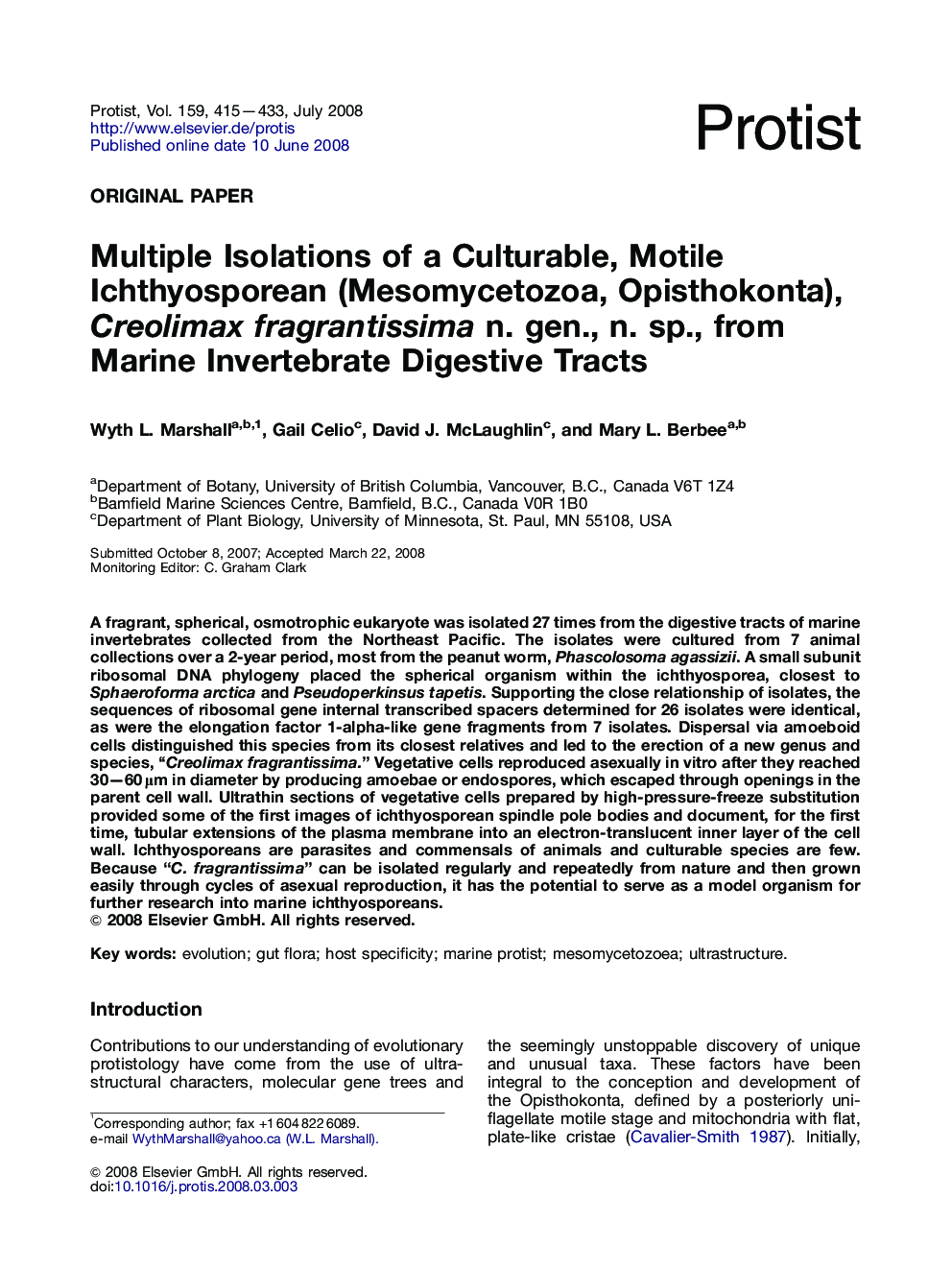| Article ID | Journal | Published Year | Pages | File Type |
|---|---|---|---|---|
| 2062174 | Protist | 2008 | 19 Pages |
A fragrant, spherical, osmotrophic eukaryote was isolated 27 times from the digestive tracts of marine invertebrates collected from the Northeast Pacific. The isolates were cultured from 7 animal collections over a 2-year period, most from the peanut worm, Phascolosoma agassizii. A small subunit ribosomal DNA phylogeny placed the spherical organism within the ichthyosporea, closest to Sphaeroforma arctica and Pseudoperkinsus tapetis. Supporting the close relationship of isolates, the sequences of ribosomal gene internal transcribed spacers determined for 26 isolates were identical, as were the elongation factor 1-alpha-like gene fragments from 7 isolates. Dispersal via amoeboid cells distinguished this species from its closest relatives and led to the erection of a new genus and species, “Creolimax fragrantissima.” Vegetative cells reproduced asexually in vitro after they reached 30–60 μm in diameter by producing amoebae or endospores, which escaped through openings in the parent cell wall. Ultrathin sections of vegetative cells prepared by high-pressure-freeze substitution provided some of the first images of ichthyosporean spindle pole bodies and document, for the first time, tubular extensions of the plasma membrane into an electron-translucent inner layer of the cell wall. Ichthyosporeans are parasites and commensals of animals and culturable species are few. Because “C. fragrantissima” can be isolated regularly and repeatedly from nature and then grown easily through cycles of asexual reproduction, it has the potential to serve as a model organism for further research into marine ichthyosporeans.
